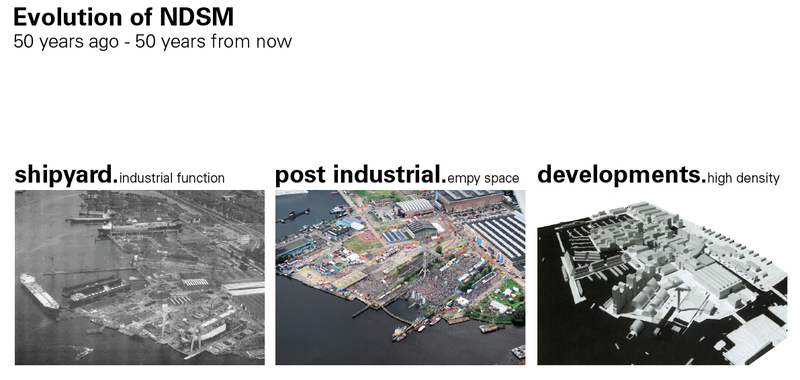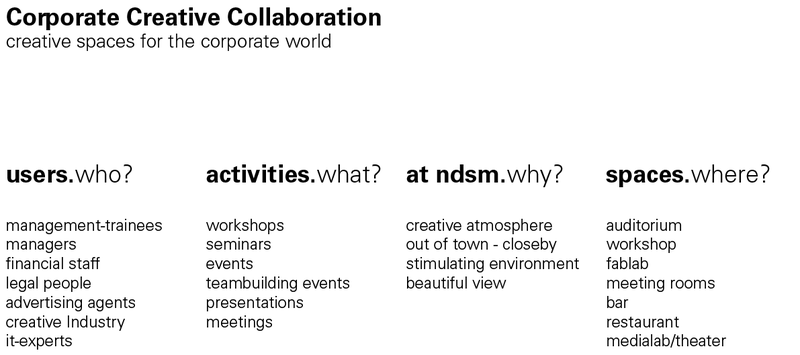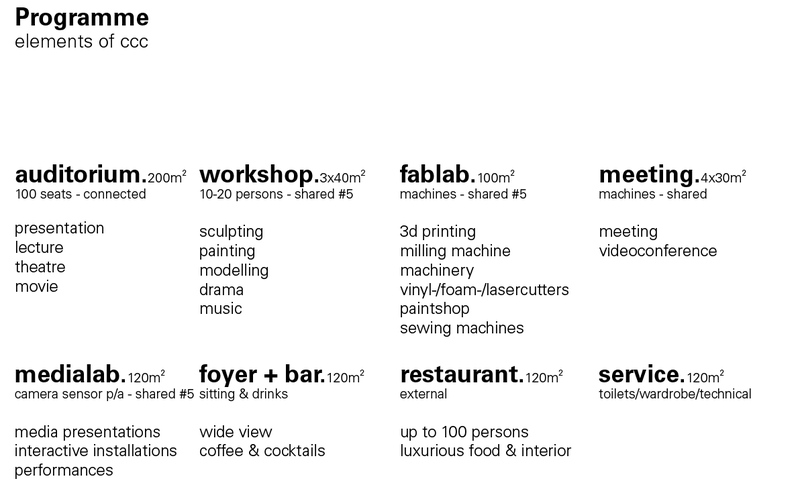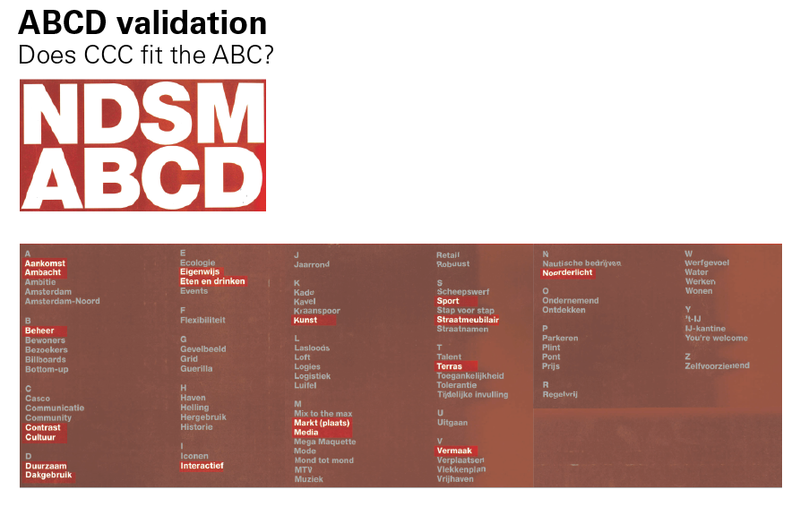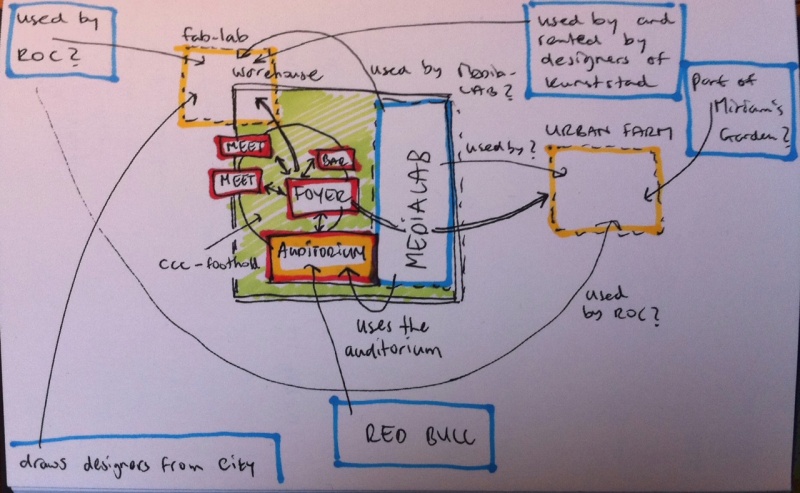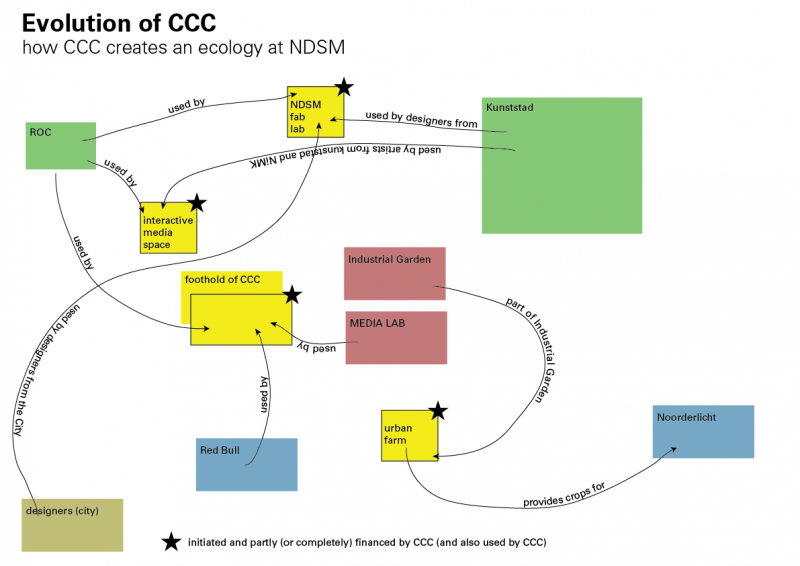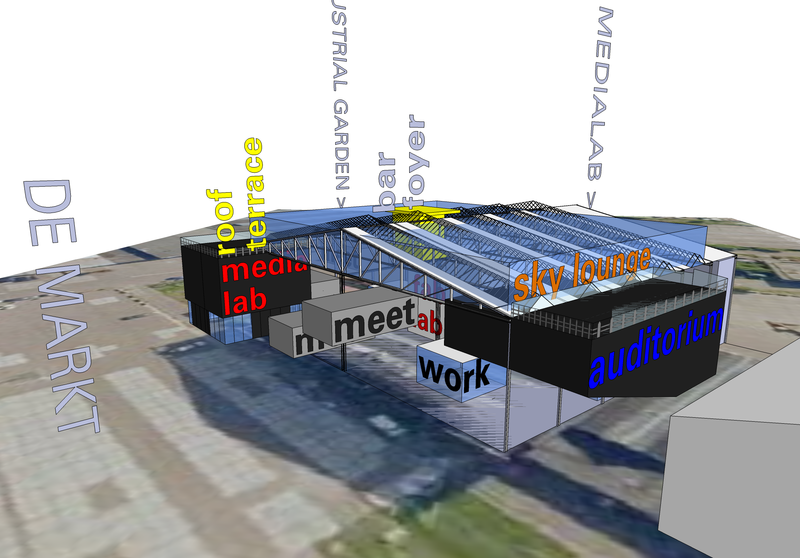project15:Challenge
Contents |
History and Futures of NDSM
NDSM has been a shipyard until 1979. After this time the site became vacant and this vacuum attracted a lot of squatters and eventually artists to work there, close to the city, yet with a lot of space for very little money. Slowly the site turned into a freehaven with a lot of artistic activity, creative entrepreneurs and festivals. The site nowadays is a unique place in Amsterdam and surroundings, and is an asset to the City in itself. However, future developments may jeopardize this cultural freehaven if the development does not deal with the delicacies of current activities.
As soon as the current weak economical climate will improve, the NDSM-werf will be an interesting site to be developed for by example housing, which will endager the cultural ecosystem that is NDSM. Cultural and creative activities in their current form will face a deficit in financial revenue compared to the planned developments. In order to protect the cultural activities at the NDSM-werf they must be monetized by making them an essential part of a bigger - local - economy. This can be done by recognizing and calculating the economical value of the attractiveness of the cultural environment at the site. However, consolidating the cultural and artistic activities by making them an essential part in new businesses will create stronger (new) relations and perhaps new opportunities.
To create this new relation the creative activities should become part of an economical relationship as described in the thoughts section on this page. Creative-Corporate Collaboration attempts to do exactly this in a flexible and adaptable way.
Creative-Corporate Collaboration
CCC is a proposal for a foundation that connects the creative world to the corporate world. By packaging creativitity as a commodity and exchanging it for the big money, the demand for creative people (capable of exchanging their skills and knowledge) at NDSM remains, and might even be strengthened by never before envisioned relations with people from the corporate world.
Amsterdam, housing the largest number of corporate workers in the Netherlands, has a big pool of potential visitors for the foundation. With the newly constructed Noord-Zuidlijn subway line the NDSM-wharf will be a closeby location for the corporate hub at the Zuid-As. Also many offices located in the old city will be within traveling time of about half an hour.
Most activities going on at CCC are focused around creation itself, hereby offering a different perspective and new insights to the corporate world. Possibilities range from seminars, skill building or training programmes in a creative environment to one day workshops or just a meeting in a creative atmosphere.
Programme
The spaces of the CCC programme will organized around a foyer that is accessible directly from the warehouse CCC is built around. Two important spaces are shared with the MEDIALAB. The fablab, a space all about physical processes of creation, and the medialab, focused at creation and manipulation of different types of media, are important for both the MEDIALAB and CCC. A substantial part of the costs of these expensive spaces will be funded by CCC, where as MEDIALAB will be more on the side of taking care of the content and organisation of the activities in the labs.
A way to time-share these spaces will be found in the planning through a shared calender.
NDSM/ABCD
Aankomst Being located at NDSM is important for CCC for; it is close to the city, fast to travel to, yet it is a completely different setting.
Ambacht – key connection CCC’s activities are mainly focus around the process of creation. By doing so it attempts to generate new insights and create new skills for it’s users.
Beheer – key ambition Maybe beheer is the most important aspect of CCC. By incorporating “big money” at the NDSM-site in a symbiotic relation with art and creativity, it will monetize the current qualities of the site and preserve them for the future by valuing it and thus protecting it from “enemy money”.
Contrast – key quality Introducing the “suits” to the site is daring. Not just the long forgotten North vs the prestigious South, as well as the establishment vs the dock-workers or bankers vs squatters, might create friction, but is also an opportunity to create new understanding between the two worlds.
Cultuur – key ingredient Culture is one of the main inputs for CCC. Apart from creativity and art, the rich cultural atmosphere at NDSM is what distinguishes CCC from competitors.
Duurzaam (opportunity) Duurzaam, or sustainable is a goal in the realisation of CCC.
Dakgebruik (opportunity) The CCC uses the old roof of the warehouse in a totally new way.
Eigenwijs quality Doing things differently at NDSM is contributing to the uniqueness of CCC.
Eten & Drinken connection Food is obviously a part of CCC. But not just the very delicate, expensive finger foods usually found at corporate headquarters. NDSM will not just bring food to the people, but will bring people to the food. Around CCC you may find the "suits" planting, harvesting, and processing their own food in a workshop at the Industrial Garden
Interactief quality The environment at NDSM is more interactive than elsewhere. With less rules, less conventions and more activity it creates a vibrant, different society.
Kunst key ingredient Kunst is one of ingredients that is key to creating a special atmosphere in and around CCC that will make up for a unique experience.
Markt(plaats) connection De markt, a flexible market/event space is in front of CCC. The relation between a market and an industrial garden outside the warehouse, and a kitchen (at MEDIA LAB) creates the circumstances for a fruitful synergy.
Media key connection CCC is not just sharing the warehouse with MEDIA LAB. It is also trying to provide a space for (temporary) residency, or events for organisations such as the NiMK (Dutch Institute for Media Art), that is already present at NDSM in an improvised spot at the Kunststad.
Sport opportunity Sports could be a possible quality that can be integrated into the activities of the CCC at a later time.
Straatmeubilair opportunity For creating an inspiring place around the CCC, having special street furniture is a pro. Being adjacent to de markt and industrial garden there is a high probability there will be some special spaces with extraordinary street furniture.
Terras opportunity for connection The CCC has no terrace in it's programme requirements yet. However it will be very likely there will be opportunities for the terrace to be half in/outside at ground level creating an in-between space in and outdoors towards the market or industrial garden.
Vermaak quality Entertainment is part of the experience of going to NDSM. It creates interesting experiences on the way to, and from CCC.
Noorderlicht opportunity for connection CCC has no restaurant of itself. Noorderlicht might serve as a space for dinner during workshops or events.
Ecology of CCC
![]() modification of image found in: NDSM/ABCD (2008, Studio BNO)
modification of image found in: NDSM/ABCD (2008, Studio BNO)
Creative-Corporate Collaboration will establish a foothold at NDSM by starting with a few spaces at the abandoned warehouse. These spaces are accommodating the corporate guests by having an operation base from which they can venture into the creative surroundings of NDSM. The foothold consists of a foyer, meeting rooms, and an auditorium.
Gradual growth is established by adding more bases to the CCC-programme. These extra bases are erected as soon as the rules for growth of the CCC-expansion are met.
Rules of (volume) expansion:
1. there is a use for this space by the CCC-activities
2. there is a use for the NDSM-community for this space
3. there is a feasible economical model for this space (owned by NDSM-rented by CCC / owned by CCC-rented by NDSM)
4. the location of the space is within acceptable distance of the CCC-foothold, according to it's uses.
5. the planned volume does not interfere, but contributes to other activities at it's planned location.
Applying these rules to first two volumes that complement the CCC-foothold; the Interactive Medialab and the Fab-Lab; the following results can be found:
Interactive Medialab
1. is used by CCC for workshops by media-artists, presentations and exhibition space during networking events or conferences.
2. is used by media-artists such as those from NiMK and can be rented out to artists residing in the Kunststad, the ROC, or to a local partner: MEDIA-LAB
3. is payed by CCC and rented out occasionally to NDSM-partners as described in 2.
4. the space is located right at the location of the foothold and is relatively close to all partners described in 2.
5. the Interactive Medialab is situated in a smart way at the corner of the abandoned warehouse to establish both a relation with the inside as well as the outside of the warehouse.
Fab-Lab is very like the Interactive Medialab, except for rules 1. and 2.
1. is used by CCC for workshops by designers and showcases the latest possibilities of digital fabrication, in order to show it's new possibilities and impacts to society.
2. is used by the designers at the Kunststad.
These examples show how specific architectural interventions (volumes) can establish new economical- and social relationships within the ecology of NDSM. Future volumes that theoretically comply to the rules of growth may include an urban farm, sports facility, restaurant or theatre/club space.
Architectural Proposal
The CCC and MEDIA LAB both share an abandoned warehouse next to MTV and Red Bull headquarters. The large space in the warehouse is used to work at the two labs situated there (fablab and medialab). Spaces to accomodate the rest of the program are inserted in the warehouse walls. Most of the spaces such as the workshop places (warehouse floor) and the meeting rooms, can be used for a wide variety of uses. In the future meeting rooms for instance can be converted to offices for small (zzp) offices. The larger spaces are useable for different kind of events including theatre, conferences, parties, symposia, educational activities and more.
Validators
insert tags here
NiMK ROC Kunststad MEDIA-LAB IJ-Kantine
